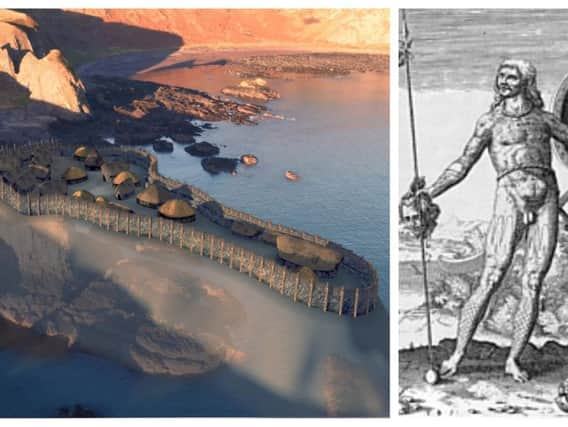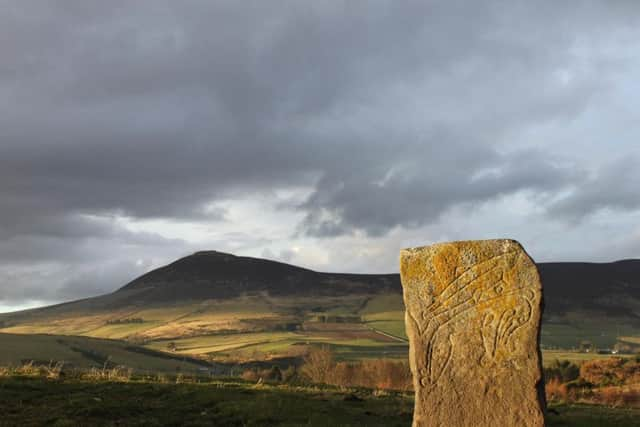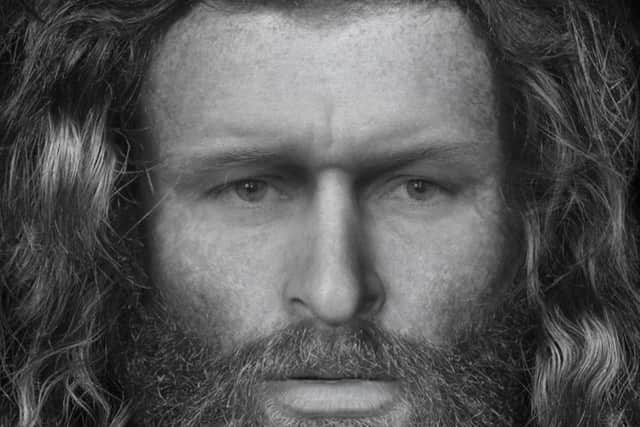The Picts: How their mysterious world is being illuminated like never before


Now, a leading archaeologist has hailed a 'golden spell' in new discoveries about the Picts, with their everyday world now illuminated like never before given a string of breakthrough finds.
Professor Gordon Noble, head of archaeology at Aberdeen University, has led several major excavations that have increased understanding of the people who emerged during the time of Roman rule of Britain but whose language, culture and identity disappeared after 500 years.


Advertisement
Hide AdAdvertisement
Hide AdOnly a few written sources which reference the Picts exist and only a small number of places around Scotland where they once lived and ruled have so far been found.
But Professor Noble said understanding of the Picts had “grown immensely” since the early 2000s with new large scale archaeological investigations helping to piece together their story in a level of detail not previously known.
The discovery of evidence of wine drinking, elaborate metal working and connections to European trade routes at Rhynie in Aberdeenshire, a probable royal residence during the 6th and 7th Century, was described as a 'watershed moment' by Professor Noble, who led excavations of the site as part of the Northern Picts project.
The Northern Picts project has also examined in detail Fortriu, the Pictish Kingdom long thought to be centred around Perthshire but now known to be based on the southern shores of the Moray Firth.


The excavation of a Pictish monastery at Portmahomack by Dr Martin Carver of York University and evidence of book production at the site has been another important development.
He added: “There is a golden spell at the moment with many active projects across Scotland by universities and communities and other organisations.
“Previous studies on Pictish power centres has taken a very minimal, keyhole approach.
“Uncovering settlement and early church remains at sites like Rhynie and Portmahomack have began to reveal the everyday world of the Picts on a more detailed level than has been previously documented.”
Advertisement
Hide AdAdvertisement
Hide AdLast year, a new way of dating Pictish stones significantly "pushed back" the chronology of these often iconic monuments.
The earliest stones, found at the remains of an old Pictish fort at Dunnicaer sea stack near Dunnottar Castle, Stonehaven, are now known to have been created between the 3rd and 4th Century AD.
Previously, scholars dated the country’s earliest Pictish stones to anywhere between the 5th and 7th centuries.
The new dates showed that the Picts were innovators in the way they communicated and were doing so around the same time writing systems were being developed across Europe, such as the Ogham script of early Ireland and the runic system developed in Scandinavia.
Professor Noble said a lack of sites with links to the Picts was among the greatest challenges in researching the people and their time.
He said: "There are still very few Pictish sites compared to the Iron Age for example. In particular we have very few settlements other than elite examples.
"This has improved a little in recent years with excavations on the Pitcarmick style buildings by Perth and Kinross Heritage Trust, but it is still an issue.
He said that understanding of the Picts "not complete at all and never will be" given the slim historical sources of the time.
Advertisement
Hide AdAdvertisement
Hide Ad"But this is where archaeology is so important – we can and will uncover so much more if we can raise the appropriate funding to do so," he added.
He said the next big areas of research were likely to be the transition from the Pictish era as the Viking Age dawned and the disappearance of Picts as an identity and language.
Professor Noble added: "The Picts are such an important element of Scotland’s early history and despite the recent developments, we can still know a lot more than we do."
